Recently, KH Window Fashions has installed a number of shutters.
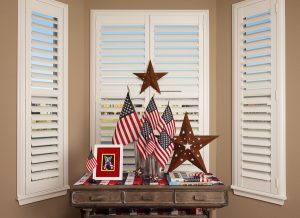
Mounted inside the window frames
I love the clean, classic look of shutters, and I wanted to share some of my favorite shutter styles with you in today’s blog.
While preparing for the blog post, I discovered an interesting fact about the two main styles — plantation and traditional. The main difference between these two styles are the louver sizes. Traditional shutters, which were originally designed for the smaller New England windows, has a louver size of 1.25 inches while plantation shutters, thanks to the large windows popular further South, have louver sizes of 2.5, 3.5, and 4.5 inches. Today, however, large windows are more common in New England, and so plantation shutters are too!
Check out some shutter styles below. And have a happy and safe 4th of July.
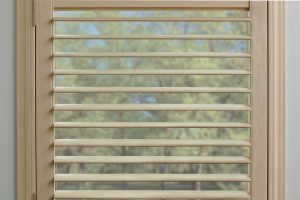
Two and half louver size
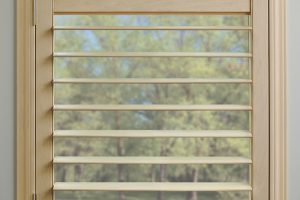
Three and half louver size
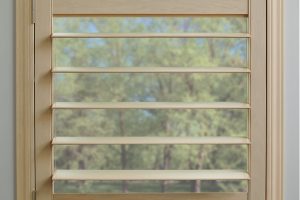
Four and half louver size
Louver sizes impact your window visibility. The larger the louver, the more you’re able to enjoy natural sunlight and the view outside your winder. Smaller louvers restrict lighting and limit visibility. Plus, shutters with larger louvers need less louvers. Less louvers mean less horizontal lines, creating a cleaner, simplified decor.
In fact, four and half louvers provide 39% more view-through between the louvers than three and half and 130% more than two and half louvers. Wow!
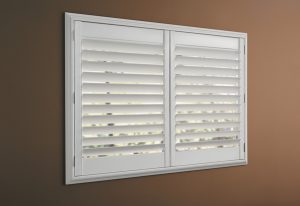
Rear tilt bar
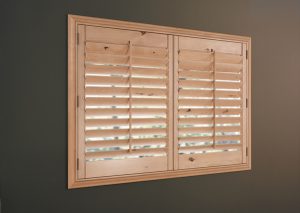
Front tilt bar
Can you see the vertical rod on the center of the panels of the right side shutter? This shutter has the traditional front tilt bar that opens and shuts the louvers.
Now look at the picture on the left. These panels have a rear tilt bar, which is located discreetly on the side rear of the panels. It’s easy to open and close these shutters. Instead of finagling a rod, it only takes a touch of your hand on one louver and voila! All the louvers rotate together.
Which style do you prefer?
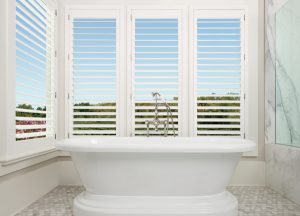
One rear tilt bar
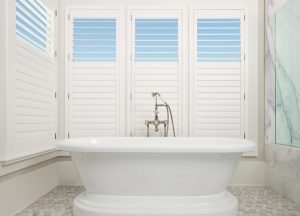
Two rear tilt bars
This set of images shows one of my favorite advantages of the rear tilt bar. This is the same window on both pictures, but the rear tilt bar is divided into two sections, which allows each section to rotate independently.
In right picture of the window, the lower section is closed for privacy while the upper section remains open to invite in the light. However, both sections can be open at the same time, like shown on the image to the left, or closed at the same time.
The choice is yours. I can help you determine the number of louvers on each tilt bar.
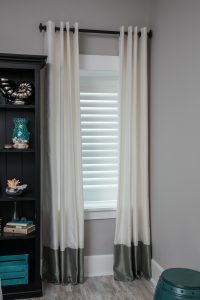
Single panel Hunter Douglas white shutter with rear tilt bar mounted inside the window frame with grommet panel drapes.
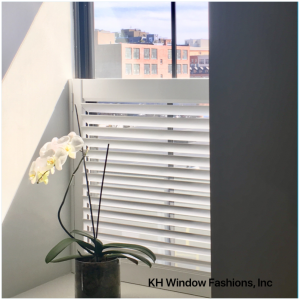
Hunter Douglas cafe shutter
Here are two examples of recent shutter installations in two different homes.
Both shutters have single (1) panel designs and the louvers are 3.5 inches. The shutter on the left is a full window, three-sided framed, and the on the right, is a cafe style two-sided framed shutter. The left shutter is on the first floor bedroom, so full privacy was a must! The right one is located in a fifth floor condo where the priority was balancing the gorgeous view with privacy. Which style shutter fits your needs?

Recent Comments